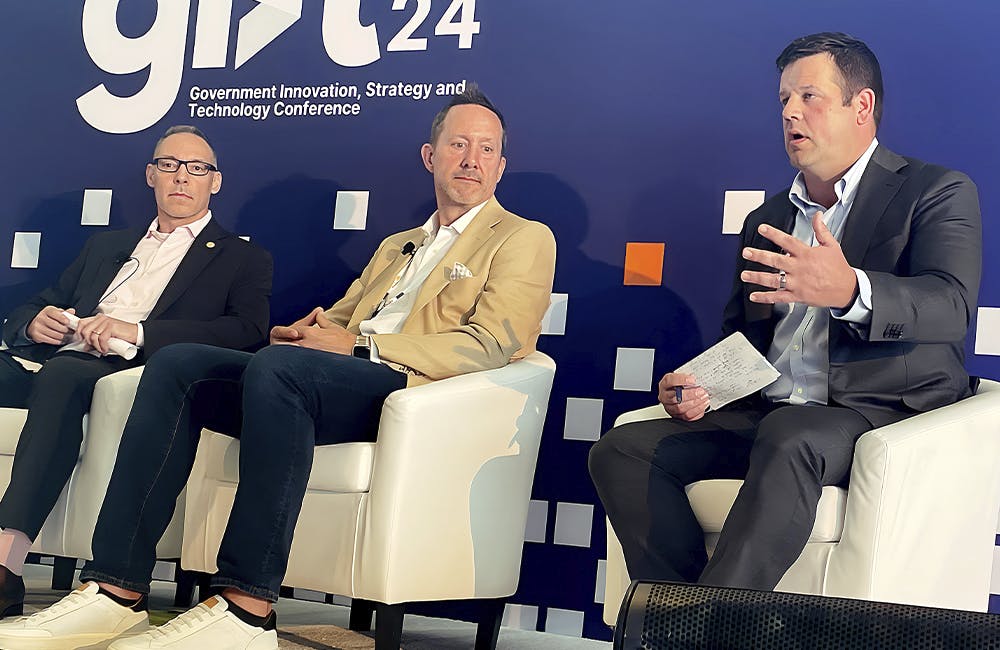Practical Approaches to Diversity, Equity and Inclusion in Federal Technology
Major tech efforts are underway to provide health equity, create a more inclusive hiring process and increase the number of women in leadership and cybersecurity roles.

Some of the nation’s top women in technology are launching initiatives to achieve diversity, equity and inclusion inside and outside of the federal government. Leaders from the Department of Veterans Affairs (VA), FBI, FDA and Centers for Medicare and Medicaid Services (CMS) at GovCIO Media & Research’s Women Tech Leaders Summit shared some efforts their agencies are doing to tackle diversity challenges that can be modeled across the federal government.
Health Equity at CMS
A top priority for the CMS is health equity. CMS Executive Director of the Digital Service Andrea Fletcher said the agency is using data collection to ensure that everyone can attain the greatest level of health regardless of gender, language or location, or mental and physical abilities.
“The color of your skin and where you live can determine greatly whether or not you have great outcomes in things like giving birth. Millions of babies are born every year in this country, and we still have a lot of work to do in ensuring that women are treated equally and fairly in that process,” Fletcher said at the event.
The agency is currently working to standardize and collect data to understand where the problems lie.
“CMS has a Medicare Disparities Mapping Tool where we’re mapping and opening up that data to where the problems are so we can improve some of the health outcomes,” Fletcher said.
CMS has also been working on what Fletcher refers to digital equity by making sure that its websites and the technology it’s putting out there is accessible to the public. Zero trust is another area of the digital equity space that the agency is focusing on.
“It can be hard to ensure that we are giving people equal privacy, trust and security when we’re trying to implement things like two-factor authentication,” Fletcher said. “There’s a lot of work around trying to understand if we put these things in place, does it add a barrier to someone’s access to health care?”
FDA’s Leadership Modernization Plan
The FDA has been undergoing a number of modernization initiatives with a series of action plans it has released over the past year. Now it is trying to develop new one in order to create a diverse and dynamic pipeline of leaders for digital transformation projects. Jessica Berrellez, executive officer at the FDA’s Office of Digital Transformation, highlighted the agency’s Diversity, Equity, Inclusion and Accessibility Action Plan.
Berrellez said even though the agency is in the early implementation stages, it views diversity, equity, inclusion and accessibility as a critical component to its workforce and leadership development.
“Leadership development is really important, but also digging below the surface and focusing on transparency, accountability, inclusive hiring and career access — understanding the moments of impact for women and other underrepresented groups across their career journeys.” Berrellez said. “We’re really starting to be more thoughtful in how we’re developing our workforce, developing leaders and building pipelines that will allow us to scale all the tech data and cyber transformation work that we’re doing.”
Cybercrime Needs More Women at FBI
The FBI is making traction with efforts to increase the number of women in law enforcement. Cynthia Kaiser, cyber deputy assistant director at FBI, said countering cyber threats is the national security threat of our lifetime, and it’s not a threat we can beat by hiring “cookie-cutter employees.”
“There’s no mold for a cyber professional because there’s no mold for the challenges that we currently and will in the future have to face,” Kaiser said. “The FBI has about 38,000 employees, and I can assure you that there are 38,000 unique backgrounds, skills and experiences that we’re looking to leverage to counter the threats of today and tomorrow.”
Kaiser said the agency recently signed the 30 by 30 Pledge, which is one way the agency is trying to encourage women to put themselves out there and apply to these positions.
“It aims to have women make up 30% of police recruit classes nationwide by 2030,” Kaiser said. “And more specifically to cyber, since many of the crimes of the future will be digital, so it’s that much more critical that technically trained women consider law enforcement as a career.”
VA’s Model for a Personal Pronoun Project
The Department of Veterans Affairs endeavored to tackle discrepancies around pronouns after veterans in the LGBTQ plus community felt uncomfortable at times because there were no cues that VA was a safe place to share that information.
Nicole Gilbride, chief strategy officer in VA’s Office of Information and Technology, helped stand up the Personal Pronoun Project, a new policy that included getting pronoun designators created in signature blocks and directories.
“In less than 30 days we stood up a pilot that we championed ourselves internally,” Gilbride said. “The only permissions we really needed were, we got the CIO to say yes since technically it’s something that belonged under our technical shop and we also got legal to approve that we were good to go.”
Gilbride said from a technology standpoint, the VA went from idea to pilot to rolled out solution across the entire department in less than 60 days.
“Within six months, we were able to completely automate it, so now it’s not a burden on technical teams because we knew we would be opening the flood gates to 400,000 people who may want to put pronouns in their names,” Gilbride said. “Now over 25,000 people across the agency have adopted pronouns, so it was a really an easy solution for us.”
Gilbride said they’ve also put together a list of guidelines for other agencies who may want to adopt this same process that includes information about how they got the solution in place and what policies they looked into.
“If you have a great idea, find someone to help you champion it and find a way to make it work — I never would have thought when this idea started that in 60 days we’d be up in running,” Gilbride said. “Sometimes it’s those little ideas that you might have or someone on your staff might have. Give them a little leash to run and see what they come back with, and you could have a solution like this at your agency too.”
This is a carousel with manually rotating slides. Use Next and Previous buttons to navigate or jump to a slide with the slide dots
-

IRS Tax Filing Pilot Part of Digital-First Customer Experience Plan
Many taxpayers increasingly expect flexible, easy and self-directed digital interactions, agency leaders said.
5m read -

Federal Agencies Make the Case for Quantum
Amid development of emerging technologies like AI and machine learning, leaders see promise in quantum computing.
6m read -

How TMF is Helping Agencies Accelerate Tech Modernization
The program launched a new AI pilot to expedite TMF applications as agency leaders urge more to consider applying for funds.
4m read -

Defense Board to Pitch Solutions for Closing Tech Talent Gaps
Defense Innovation Board members cite need to modernize people management the same way government modernizes technology.
4m read








